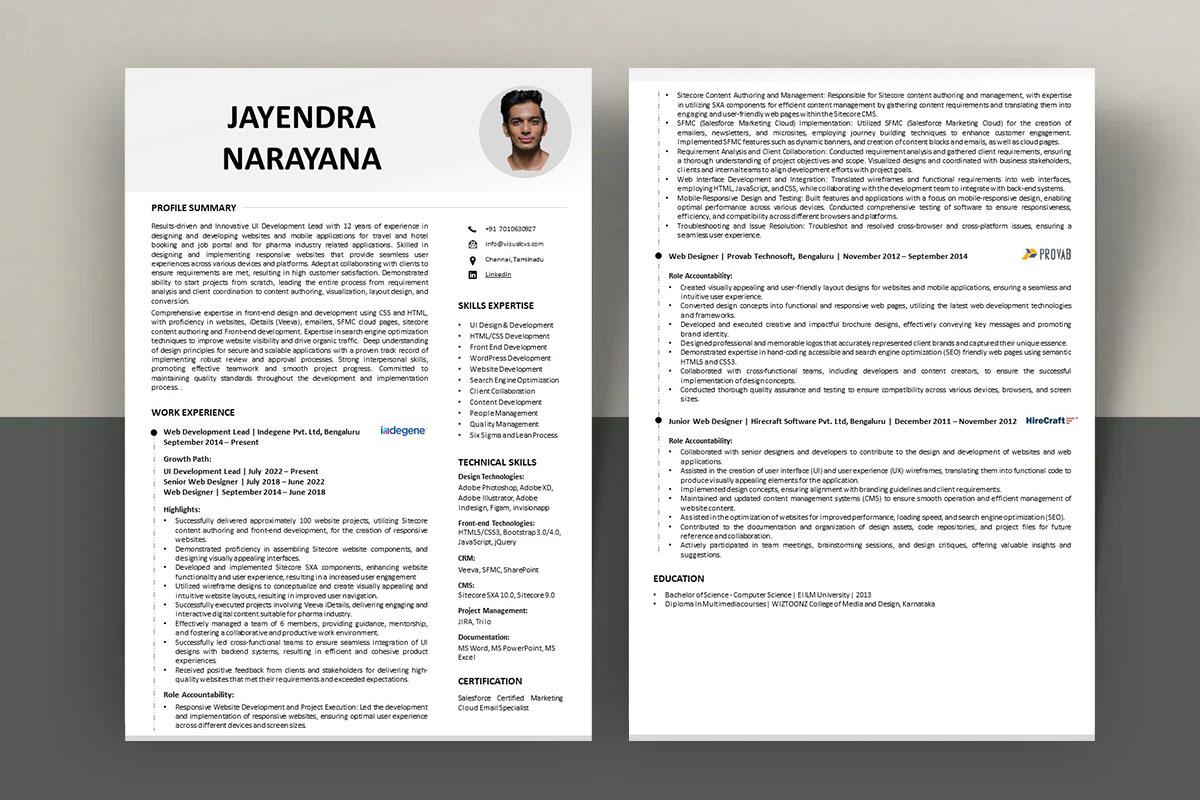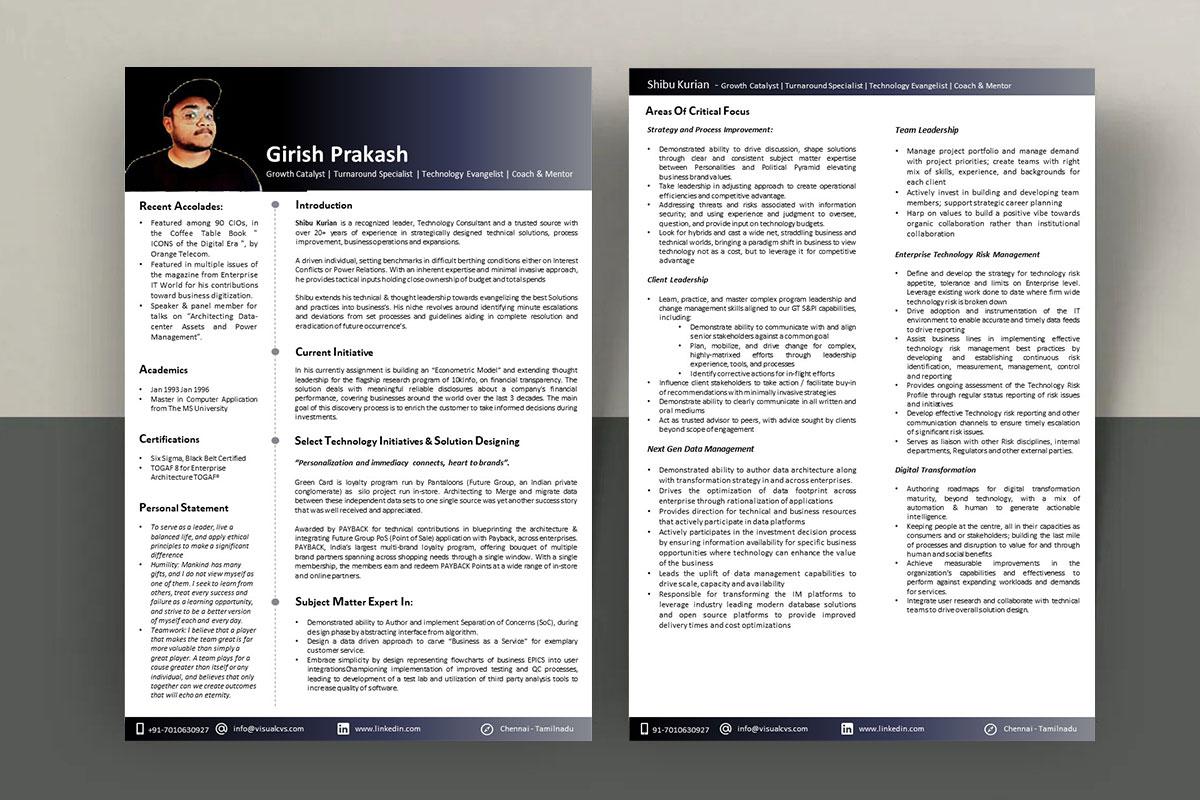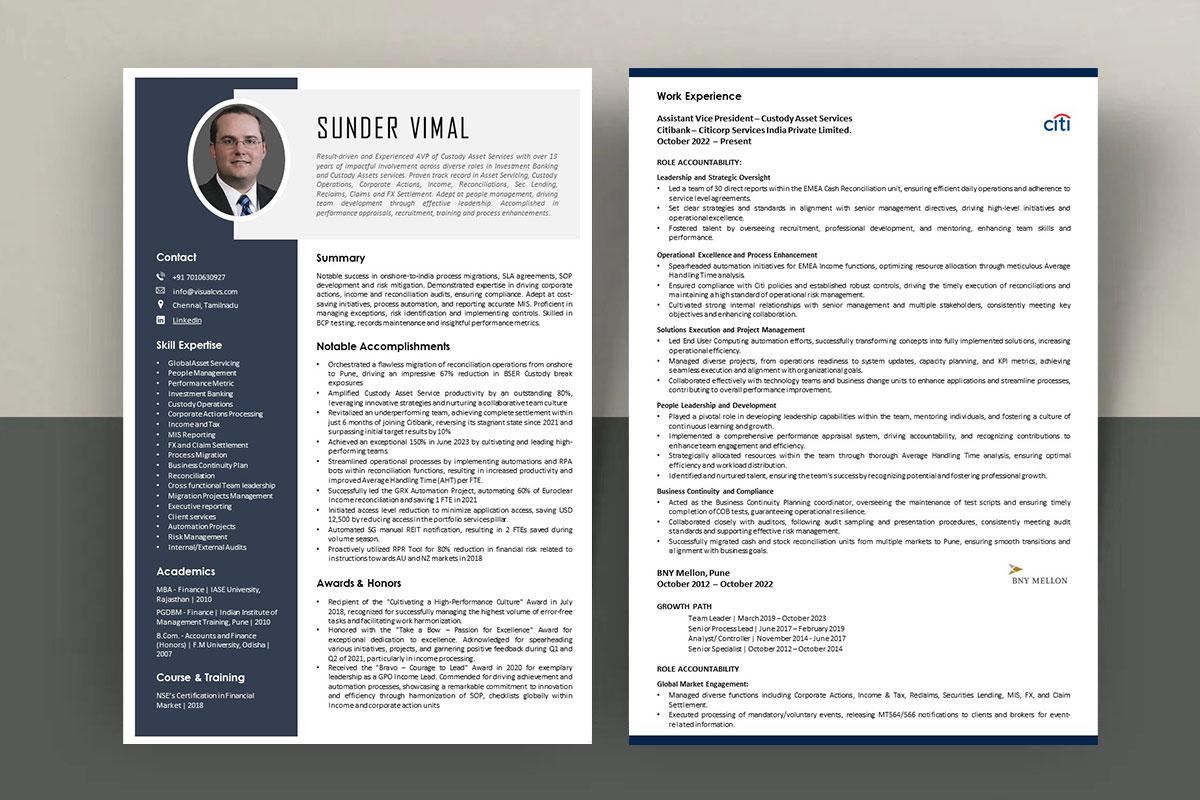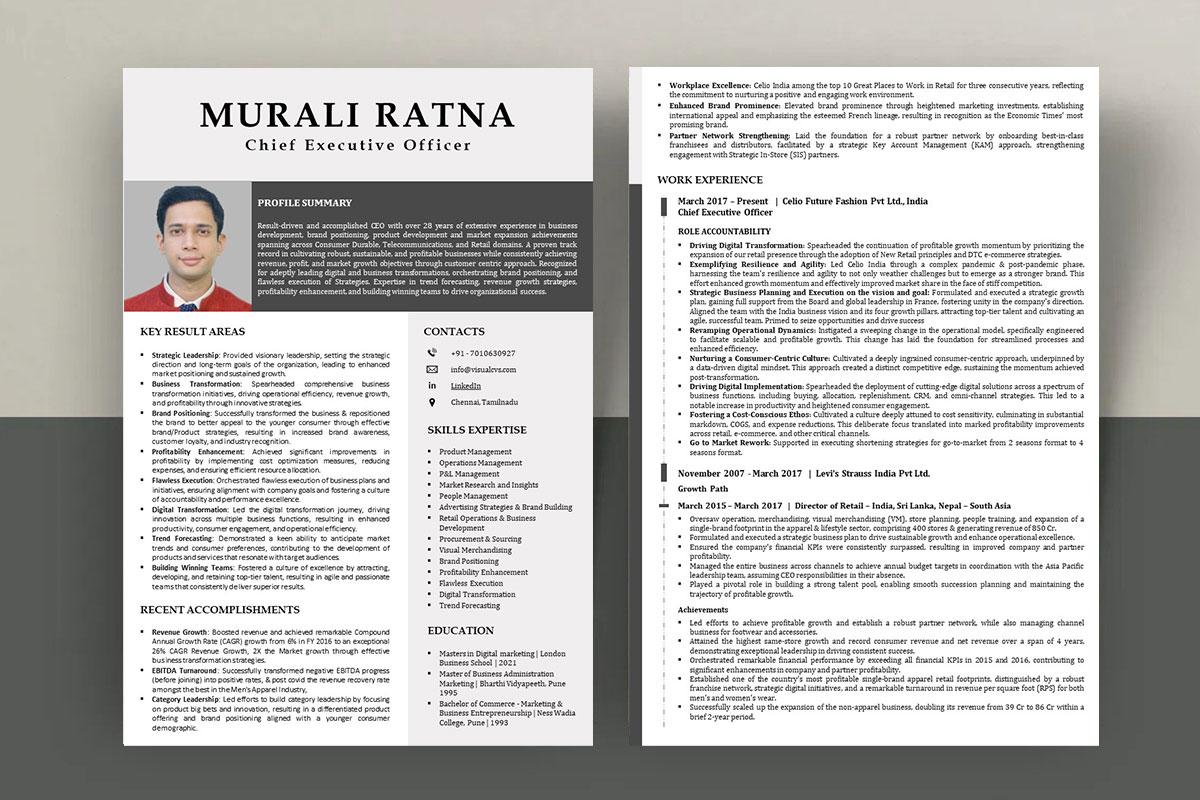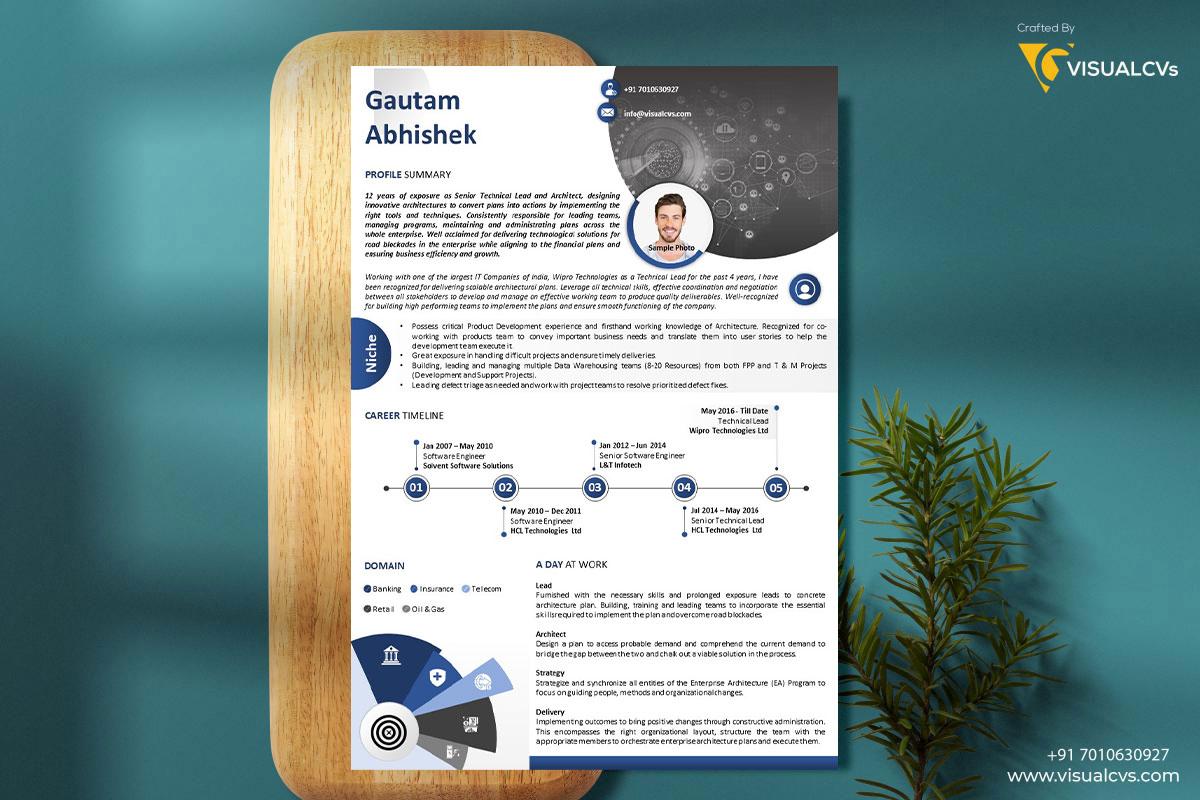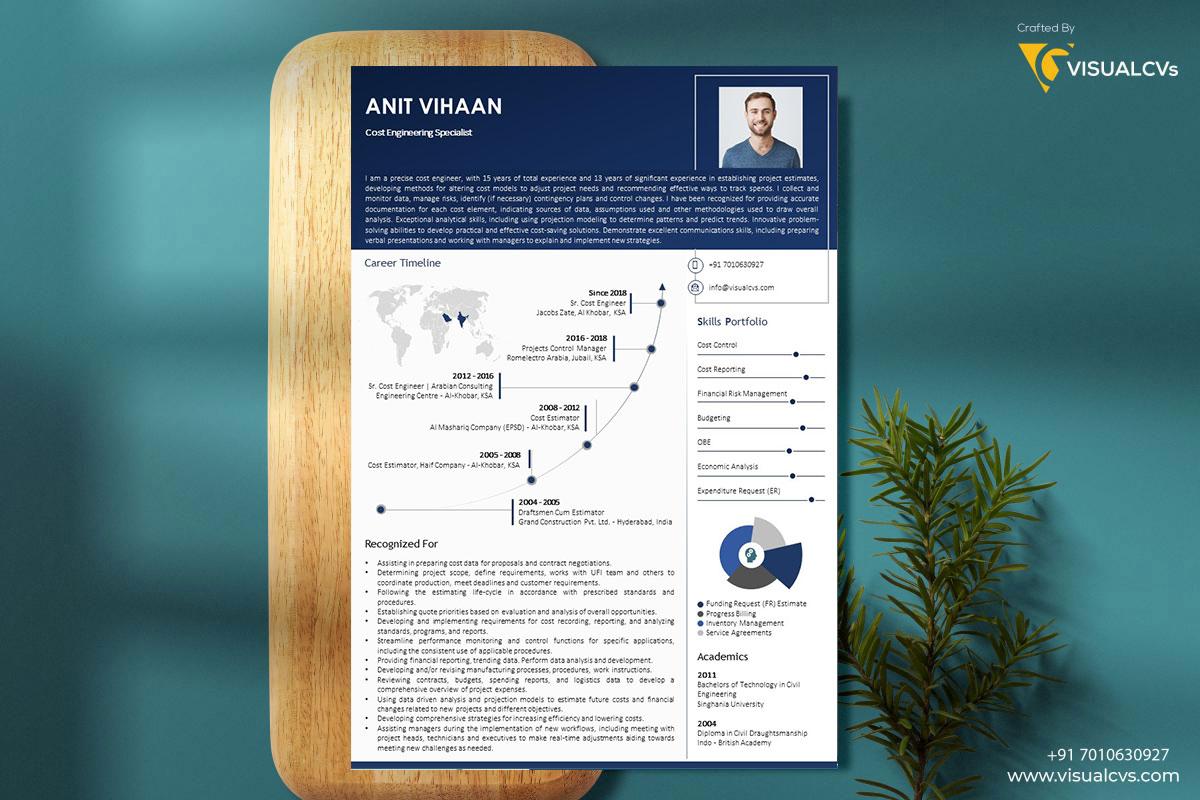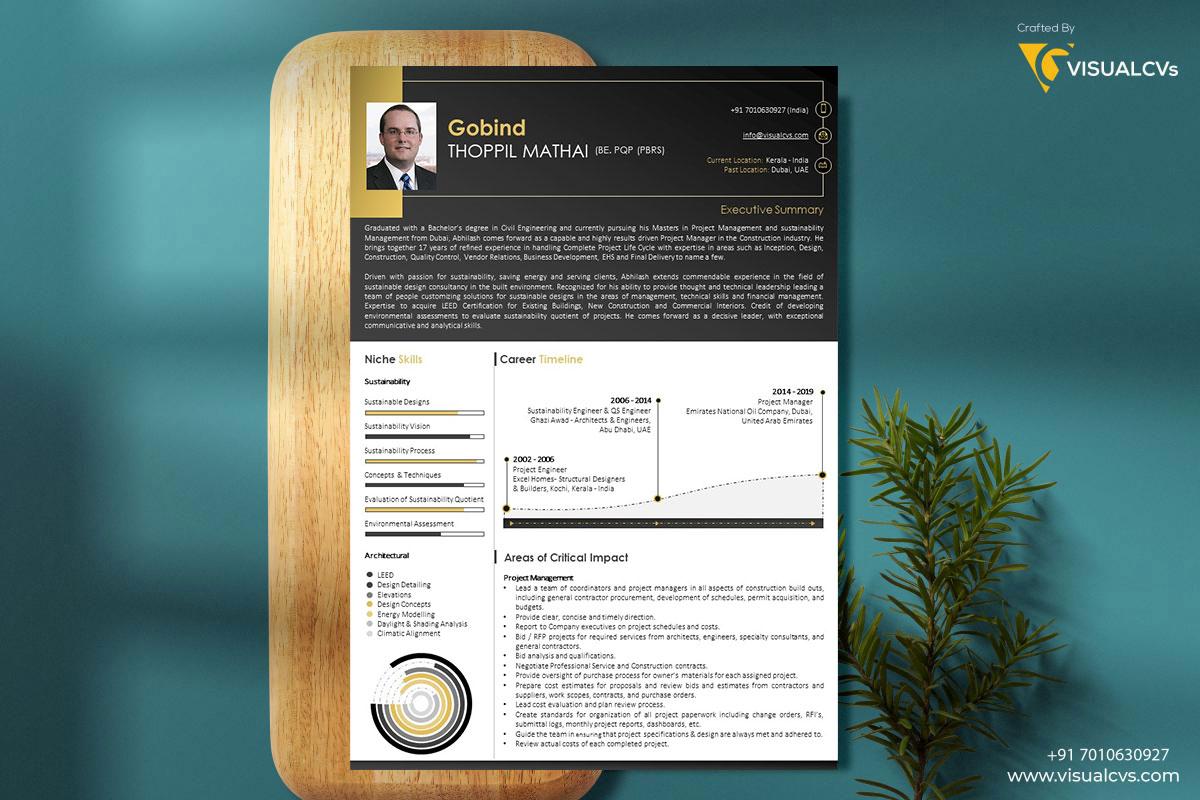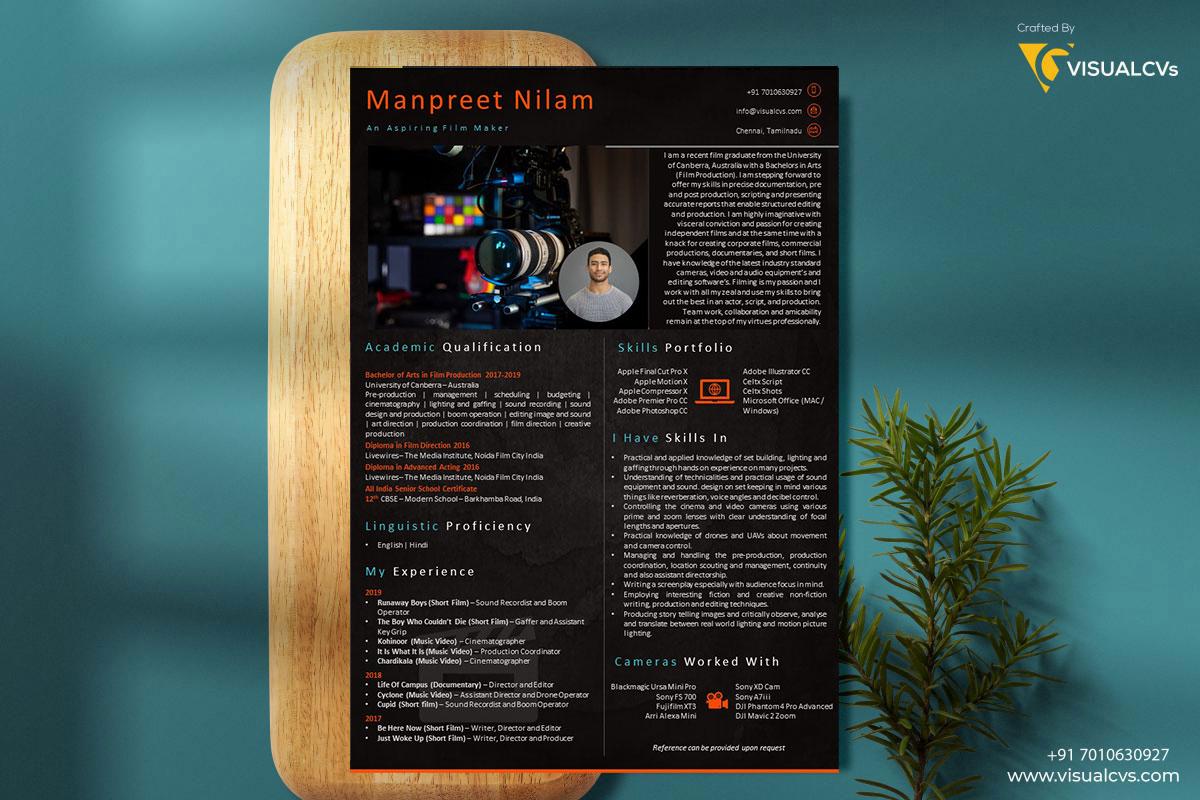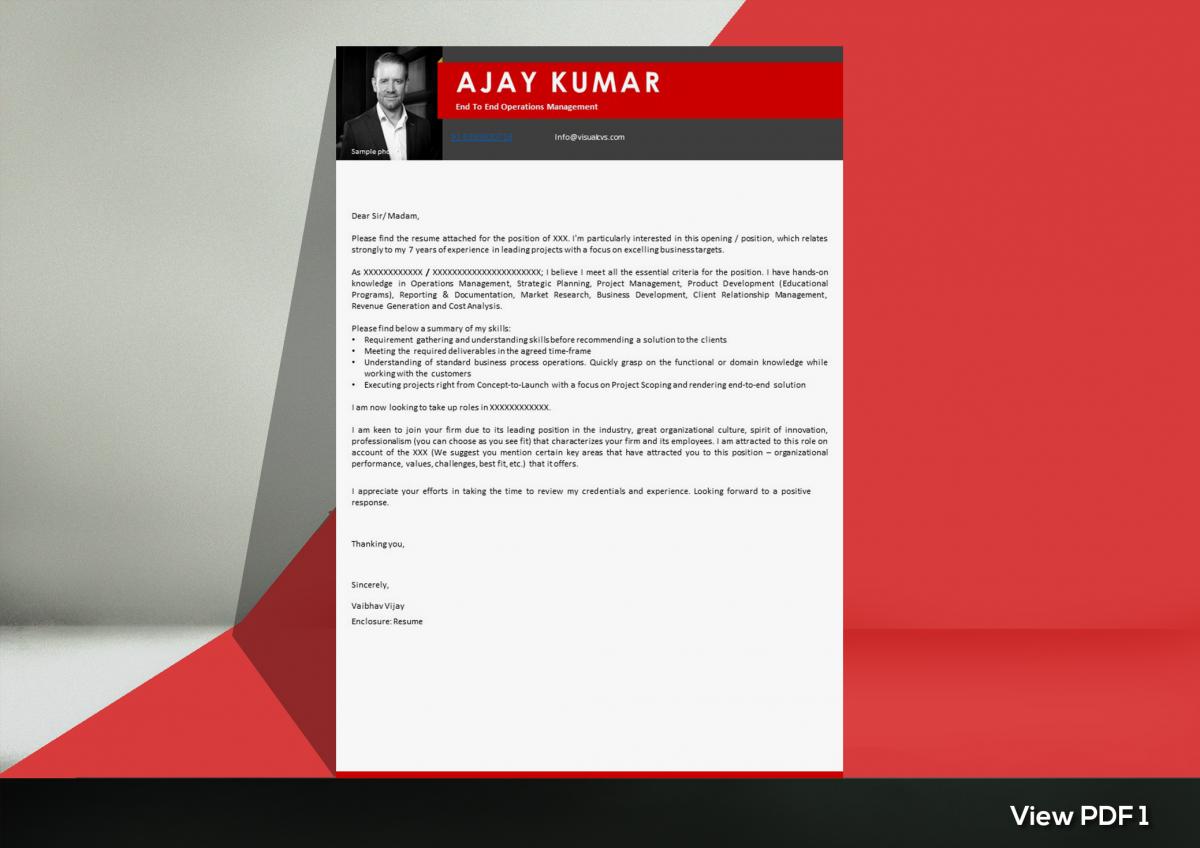Text CV
Crafting a professional CV necessitates meticulous document structuring to effectively showcase your skills and accomplishments. While tailoring your CV for each position, it should encompass a comprehensive compilation of your experiences. In industries like government, education, and traditional corporate environments, where creativity or visual elements are not the primary focus, opting for a text-based CV or traditional resume is more appropriate. This format ensures a formal and professional presentation, aligning with the expectations of these conservative work cultures. Moreover, for entry-level positions that prioritize qualifications and achievements, a well-structured text CV serves to provide clear and concise information. In instances where Visual CVs might not be the norm, such as when applying globally or in conservative settings, a text-based CV remains the standard, ensuring a universally comprehensible and professional presentation of your credentials.
Visual Resume
Visual Resume are an elevated version of Resumes, displaying skills and experiences through graphical elements such as bar graphs and pie charts. This style of CV provides a distinct edge, being visually appealing, and is particularly suitable for individuals aiming for roles in finance, analytics, media, and advertising sectors.
What makes Visual CVs the ideal choice?
In the competitive job market, recruiters face an overwhelming number of applications. To stand out, job seekers have two options: a text-based CV or a visually appealing one.
Recent studies demonstrate that a polished, professional CV can significantly enhance the likelihood of securing a job, accounting for up to 50% of the process. Thus, a well-crafted CV can essentially do the heavy lifting and pave the way for promising career opportunities.
Considering the significance of making an excellent initial impression with your CV, it's crucial to weigh the differences between a Visual CV and a traditional text-based CV before proceeding with your next application.
Cover Letters
Sometimes a well-written resume can be put to shame with a cover letter that has been drafted with not much thought applied to it. The thumb rule for a cover letter – “Shorter - the better”. Your cover letters should not restate or rehash your resume. Our writers will use this invaluable tool to explain your resume and turn it into a sales pitch for your skills and achievements.
LinkedIn Makeovers
LinkedIn has today become the online resume for many. At the same time there are details that are permissible to be published and there is language that can not be used. Saying out loud that you are looking for employment on LinkedIn could be the biggest mistake that any executive could make. We write content that inspires the reader to get in touch with you and urges the recruiter checking your profile to call you for a discussion.

